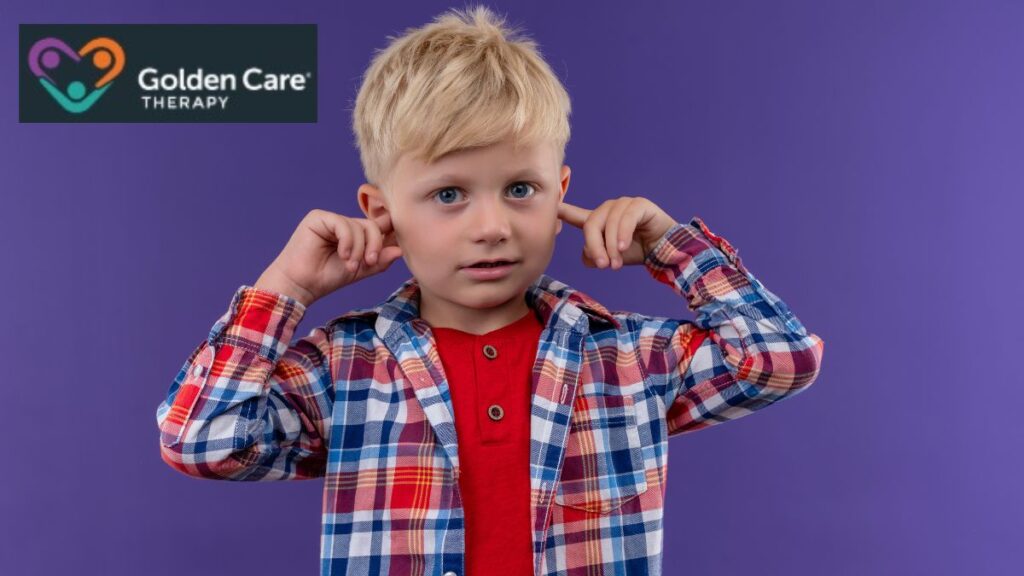Autism spectrum disorder (ASD) influences social interaction, communication, and behavior in ways that differ widely among individuals. Equally intriguing is tone deafness, a trait where people struggle to perceive pitch accurately. Tone deafness and autism often overlap, revealing fascinating insights into how autistic brains process sound and music.
Some common traits include:
- Difficulty noticing changes in pitch, melody, or rhythm
- Challenges in singing in tune or mimicking musical notes
- Sensory sensitivities to loud or sudden sounds
Exploring the link between tone deafness and autism helps us understand both conditions better. Studies suggest that differences in auditory processing in autistic individuals may contribute to tone deafness. Early recognition allows for personalized strategies that improve communication, music engagement, and quality of life.
What Is Tone Deafness?

Tone deafness, also called amusia, makes it hard for someone to recognize pitch differences in music. People with tone deafness may:
- Sing off-key without realizing it
- Struggle to follow melodies
- Have trouble enjoying or recreating music
Tone deafness does not affect intelligence or language skills. Instead, it reflects how the brain processes sound. For autistic individuals, these differences often overlap with sensory sensitivities, making certain sounds overwhelming or confusing.
Autism and Auditory Processing
Autistic individuals often experience unique sensory processing. Hearing can be particularly affected. Research shows:
- 60–70% of autistic children experience hyper- or hypo-sensitivity to sound (Tomchek & Koenig, 2016).
- Difficulty distinguishing speech in noisy environments is common.
- Some struggle with prosody, the rhythm and intonation of speech.
Tone deafness in autism may be tied to these auditory processing differences. It’s not just a musical issue. It can affect communication, social interaction, and learning.
How Tone Deafness and Autism Intersect

Studies suggest a meaningful connection between autism and tone deafness:
| Study | Sample | Key Finding |
| Heaton et al., 2008 | 32 autistic children | Over 50% showed pitch perception difficulties. |
| Williams et al., 2019 | 45 autistic adults | Auditory discrimination deficits linked to social communication challenges. |
| Loui et al., 2015 | 21 autistic children | Poor melodic reproduction is seen even in musically trained children. |
These results suggest tone deafness may be more common in autistic individuals than in the general population. Differences in auditory processing, sensory sensitivities, and genetics likely contribute.
Signs of Tone Deafness in Autistic Individuals
Spotting tone deafness in autistic individuals requires careful observation. It can overlap with other traits:
Auditory and Musical Signs
- Trouble reproducing songs or melodies
- Inability to detect off-key notes
- Confusion following musical rhythms
Speech and Communication Signs
- Monotone or flat speech
- Difficulty mimicking intonation
- Prosody challenges affecting social interactions
Recognizing these signs early can guide effective support and enhance music appreciation.
Diagnosing Tone Deafness in Autism
Diagnosis combines observation and structured testing. Professionals may use:
- Pitch discrimination tests: Detecting small note differences
- Melody reproduction tasks: Singing or playing a tune
- Auditory processing evaluations: Measuring how sound is interpreted
Assessments may need adaptation for sensory sensitivities or communication preferences.
Understanding Why Vocal Emotions Can Be Hard to Read for People with Autism
When it comes to interpreting tone of voice, children and adults with autism often face unique challenges. Research is now shedding light on why this happens, how it relates to brain function, and what the future may hold.
- Tone perception is not the problem—studies show that children with autism can hear vocal emotions just fine. Their hearing centers respond to happy, sad, or neutral tones similarly to children without autism. The difficulty arises in interpreting what those tones mean.
- Social brain differences matter—The key difference appears in how auditory information reaches the brain’s social communication hub, the temporoparietal junction (TPJ). Kids with autism show an over-connection between the hearing centers and the TPJ, which may interfere with processing emotional cues.
- Early learning shapes emotional understanding—Typically developing children naturally link vocal sounds to emotions from infancy. They can sense happiness, sadness, or frustration even without understanding all the words. This learning is often delayed or disrupted in children with autism.
- Communication relies on more than words—people often communicate feelings through tone rather than explicit statements. Missing these cues can make social situations confusing or stressful for someone with autism.
- Sensory sensitivities complicate things—Many people on the autism spectrum are oversensitive to stimuli such as loud sounds or bright lights. While these sensitivities can overwhelm, research indicates they are separate from difficulties interpreting vocal emotions.
- Research methods reveal insights—In studies, researchers played simple phrases like “a bag is in the room” in happy, sad, or neutral tones to children with and without autism. Functional MRI scans showed similar brain activity in hearing regions but differences in areas responsible for social interpretation.
- Sharper pitch perception may play a role—Some studies suggest individuals with autism can distinguish very fine differences in pitch. While impressive, this skill can delay early language milestones, as the brain may focus on acoustic details rather than extracting meaning from speech.
- Language deprivation can worsen challenges—deaf children or those with limited early language exposure often show delays in understanding social cues and theory of mind. This highlights how early language experience is crucial for developing emotional interpretation.
- Implications for communication strategies—Experts suggest adapting communication style rather than exaggerating tone or volume. People with autism may not miss cues because they aren’t paying attention—they may simply process vocal emotions differently.
- Future therapeutic potential – Understanding which brain circuits are involved in processing vocal emotions could eventually lead to therapies that strengthen these pathways. Researchers are exploring:
- Brain imaging to map auditory processing pathways in autistic individuals
- Genetic studies to identify shared genes influencing auditory perception and autism
- Adaptive music education tools for neurodiverse learners
- Links between pitch perception, language acquisition, and social communication
- Two-way learning—Communication is a shared process. Friends, family, and educators can adjust their expectations and strategies, while individuals with autism can benefit from guided support to decode emotional cues in voices.
Ongoing research promises to refine interventions and support autistic individuals in developing both communication skills and musical engagement. This growing body of knowledge helps demystify why interpreting tone can be tricky for people with autism, emphasizing patience, understanding, and adaptable communication strategies for everyone involved.
Supporting Autistic Individuals With Tone Deafness
Tone deafness cannot be cured, but support strategies exist:
- Musical Training and Therapy
Structured activities can improve pitch perception and auditory attention. Even small progress builds confidence.
- Visual and Multisensory Aids
Visual cues like musical notation, colored keys, or hand signs help connect sounds with visual information.
- Alternative Communication Approaches
Using rhythm, gestures, or digital tools lets autistic individuals express music without relying on pitch.
- Encourage Enjoyment of Music
Focus on rhythm, beat, or movement instead of pitch. Fun matters more than technical accuracy.
Why Understanding the Connection Matters
Knowing the link between tone deafness and autism has broad benefits:
- Communication: Learn prosody and speech patterns
- Learning: Tailor educational strategies for music and sound-based tasks
- Socialization: Support group activities like singing or rhythmic games
- Self-Confidence: Show musical challenges are part of neurodiversity, not personal failure.
Framing tone deafness as a neurodiverse trait fosters positive self-identity and inclusive learning environments.
FAQ: Tone Deafness and Autism
1. Can autistic individuals enjoy music if they are tone deaf?
Absolutely. Enjoyment does not require pitch accuracy. Rhythm, beat, and movement can create meaningful musical experiences.
2. Is tone deafness permanent in autism?
Tone deafness tends to persist, but auditory training and therapy can improve pitch perception and musical confidence.
3. How can parents support tone-deaf autistic children?
Encourage participation using visual aids, instruments, and rhythm-based activities. Focus on fun rather than perfection.
4. Does tone deafness affect speech in autistic individuals?
It can influence prosody, or the melody of speech, which may impact social communication. Early interventions can help.
5. Are there specialized programs for autistic individuals with tone deafness?
Some music therapy programs tailor lessons to neurodiverse learners, combining visual cues, movement, and rhythm-focused exercises.
Celebrating Every Unique Voice

Tone deafness and autism intersect in ways that illuminate the complexity of sensory processing and communication. At Golden Care, we recognize how auditory differences can influence music perception, speech intonation, and social interaction, especially for autistic individuals in New Jersey. By identifying these traits early and providing supportive interventions, Golden Care helps create an environment where individuals can flourish while embracing their unique strengths. Celebrating neurodiversity allows each person to express themselves freely, whether through speech, movement, or song. Music, whether sung perfectly or imperfectly, becomes a bridge for connection, creativity, and joy. If you want guidance on nurturing communication and sensory skills, reach out to us today and see how personalized support can make a real difference in your loved one’s life.



